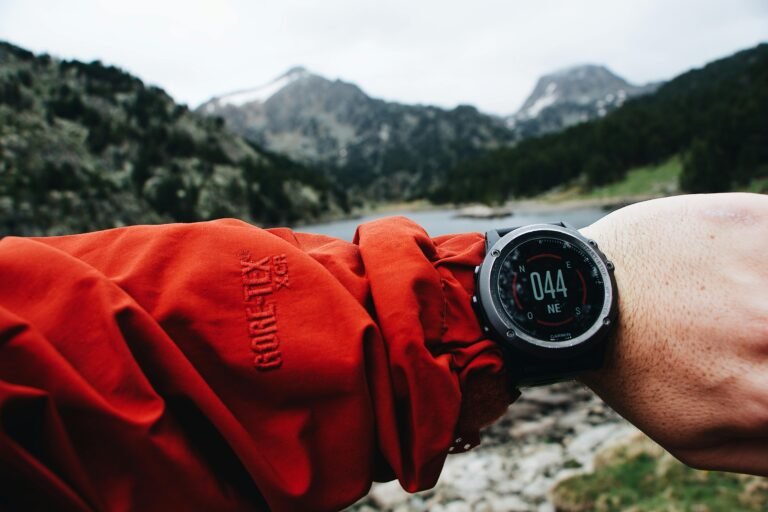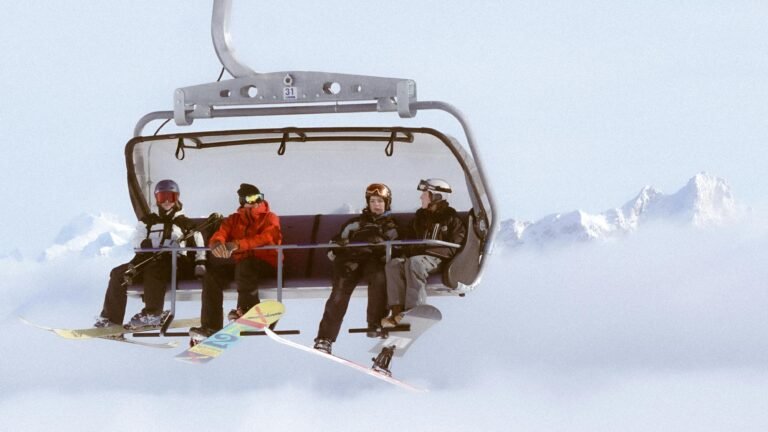How to Choose the Best Trekking Boots

Picking the right trekking boots can completely change your experience on the trail.
This guide breaks down what really makes a trekking boot “right” for you, covering different boot types, essential materials, fit, and how they hold up on various terrains.
Let’s get into it and find the pair that’ll keep you steady on your next adventure.
Understanding Different Types of Trekking Boots
With trekking boots, a one-size-fits-all approach doesn’t cut it.
Different boots are made for different kinds of hikes, and picking the right type depends on where you’re headed and how intense the trail is.
Here are the main types to consider:
Day Hiking Boots
Day hiking boots work well for shorter, easier hikes on relatively gentle trails.
Built to be lightweight and flexible, they’re comfortable for beginners or anyone planning casual hikes.
The reduced weight also helps cut down on fatigue, letting you go farther without wearing out your legs.
And if you’re keeping an eye on your budget, you can still find solid options—check out The Best Affordable Hiking Boots for some great choices that won’t compromise on quality.
Backpacking Boots
Backpacking boots are made for tougher trails and long, multi-day treks, especially when you’re carrying a heavier pack.
They’re usually on the heavier side, with strong ankle support and durable materials that handle the abuse of rugged paths.
If you’re heading out on a long hike or carrying a lot of gear, these boots will give you the stability and protection you need to tackle uneven ground safely.
Mountaineering Boots
Mountaineering boots are purpose-built for tough alpine terrain, ice, and snow.
They’re usually stiffer to give you a solid, stable platform on steep or rocky slopes and in icy conditions.
Many are crampon-compatible, allowing you to attach spikes for safe movement on ice.
If you’re heading into extreme conditions, these boots provide the support, insulation, and durability you’ll need to handle it all.
Key Features to Look for in Trekking Boots

Once you’ve nailed down the type of boot that matches your trek, it’s time to look at the features that really impact your comfort and performance on the trail.
Waterproofing and Breathability
Waterproof membranes like Gore-Tex are common in trekking boots since they block water from getting in, keeping your feet dry.
But keep in mind, waterproofing usually means less breathability, which can lead to sweaty feet on long hikes.
If you’re expecting rain, snow, or muddy trails, waterproof boots are worth it.
On the other hand, if you’re trekking through hot, dry areas, a breathable, non-waterproof boot might actually keep you more comfortable.
Support and Stability
Ankle support is key, especially on rough terrain, as it helps prevent ankle twists on uneven ground.
The sole’s stiffness also plays a role in stability—a stiffer sole gives you a stable platform on rugged trails, while a softer sole offers flexibility for smoother paths.
Good impact absorption is another important factor, as it reduces stress on your joints and keeps you comfortable over long distances.
Weight
Lightweight trekking boots are ideal for short hikes on easier trails, while heavyweight boots offer durability and stability for longer, more rugged hikes.
The choice depends on your trekking plans: a lightweight boot can reduce fatigue over time, but a heavier boot offers more protection and stability when carrying heavier loads or traversing difficult terrain.
Traction and Grip
The sole’s design and material impact traction, which is essential for staying stable on various terrains.
Boots with deep lugs and a rugged tread pattern grip well on muddy, rocky, or slippery trails.
Different tread patterns work better on specific terrains, so think about where you’ll be hiking most and pick a boot with a sole designed for that type of ground.
How to Find the Perfect Fit for Your Trekking Boots

Even the best features won’t help if your boots don’t fit properly.
Here’s how to make sure your boots feel just right from the first step.
Tips for Trying on Boots
When trying on boots, wear the same socks you’ll use for hiking since they can change the fit.
It’s also smart to try them on in the evening when your feet are slightly swollen, as they would be during a hike.
To check the fit, use the “thumb width” method: when your toes are touching the front, there should be about a thumb’s width of space between your toes and the front of the boot.
This gives room for natural swelling and helps keep your toes comfortable, especially on downhill sections.
Assessing Heel and Arch Support
Your trekking boots should hold your heel securely in place to avoid the rubbing that causes blisters.
To test this, lace up the boots snugly and walk around a bit—if your heel lifts, they’re likely not the right fit.
Also, make sure the boots give good arch support to prevent discomfort on long hikes.
Breaking in Your Boots
New trekking boots are often stiff, so breaking them in is key to avoiding discomfort on the trail.
Start by wearing them around the house, then gradually work up to short walks outside.
Leather boots usually take longer to break in than synthetic ones, so plan ahead if your trek is coming up.
This process helps the boots mold to your feet, cutting down the risk of blisters.
Choosing the Right Materials for Your Trekking Boots

The materials in a boot affect its weight, durability, and water resistance.
Here’s a quick breakdown of the most common options.
Leather vs. Synthetic Materials
Leather, particularly full-grain leather, is valued for its durability and water resistance, making it ideal for tough conditions, though it tends to be heavy.
Nubuck leather provides similar durability but with a softer feel and slightly lighter weight.
Synthetic materials, like nylon and polyester, are much lighter and more breathable than leather, but they generally don’t last as long.
Waterproof Linings and Insulation
Waterproof linings add some weight to boots but keep your feet dry.
For cold-weather hikes, insulated boots are worth considering since they help retain warmth, making a big difference in icy or snowy conditions by protecting against frostbite.
Just keep in mind, insulation can make your feet warmer in hot climates, so choose based on where you’ll be trekking.
Matching Boots to Different Terrains and Climates
Different terrains and climates need specific boot features.
Here’s a quick guide on what to look for based on where you’re headed.
Trekking Boots for Rocky and Mountainous Terrain
For rocky, uneven terrain, you’ll need boots with solid ankle support, a stiff sole, and strong traction.
Look for rugged soles with deep lugs to grip well on rocks and loose gravel.
Durable materials are also a must in these conditions, as they help protect against cuts and abrasions.
Boots for Wet or Muddy Conditions
On wet trails, waterproof boots with strong traction are essential to keep your feet dry and prevent slipping.
Breathable linings are also important to wick away internal moisture, as sweat can still build up even in cold, damp conditions.
Trekking Boots for Hot, Dry Climates
In hot weather, lightweight boots made with breathable materials will help keep your feet cool.
Choose boots with minimal waterproofing, as they usually have better ventilation, allowing moisture to escape and lowering the risk of blisters.
Common Mistakes to Avoid When Buying Trekking Boots

Avoid these common mistakes to make sure you’re choosing the right boots.
Choosing Style Over Function
Don’t let looks outweigh function when choosing boots.
Fit, durability, and how well they match your terrain should always come first.
Ignoring the Importance of Fit
Picking the wrong size can cause serious discomfort and even injuries.
Always go for a well-fitted boot rather than one that just feels “close enough.”
Skipping the Break-In Process
Breaking in your boots is key for comfort on the trail.
Don’t make the mistake of heading out on a long hike with boots that haven’t been broken in yet.
F.A.Q
How much should I spend on quality trekking boots?
Spending between $100 to $300 can get you a durable, high-quality pair of boots. Cheaper options often won’t offer the same level of support or last as long.
How can I waterproof trekking boots that aren’t waterproof?
Use a waterproofing spray or wax made for your boot’s specific material to boost water resistance and keep your feet dry.
Can I use trekking boots for everyday hiking?
Yes, but for shorter hikes, day hiking boots might be more comfortable since they’re lighter. Trekking boots, however, provide extra support and durability for longer, more rugged hikes.
How often should I replace my trekking boots?
Replace your boots every 500–800 miles, or sooner if they start losing support, grip, or show serious wear and tear.
What’s the difference between hiking shoes and trekking boots?
Trekking boots offer better support and durability, ideal for tougher trails, while hiking shoes are lighter and more flexible, making them a good choice for shorter, easier hikes.
Conclusion
I learned the importance of the right trekking boots the hard way on a week-long trek through rugged mountain terrain.
I’d chosen boots that were “close enough” in fit, thinking they’d be fine once I broke them in on the trail.
By day two, I was dealing with painful blisters and sore arches that made each step harder.
After that experience, I made it a point to find boots with a precise fit, solid ankle support, and a durable sole for the next trek.
The difference was night and day—I could focus on the journey instead of my feet.
So, if you’re prepping for a long hike, trust me: taking the time to find the right boots is worth it.
Ready to plan your next hiking trip?
Dive into How to Plan a Hiking Trip: Step-by-Step Guide for Beginners for expert tips and a detailed roadmap to make your hike a success!






